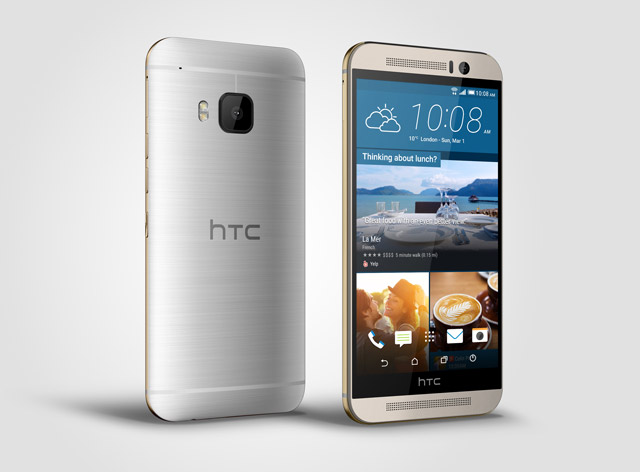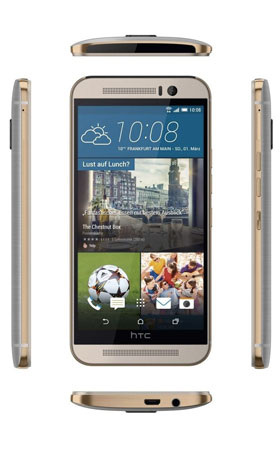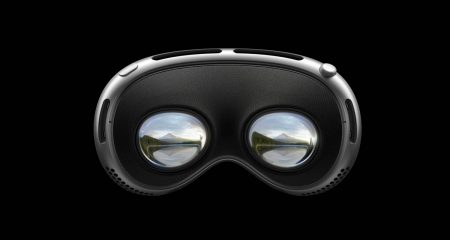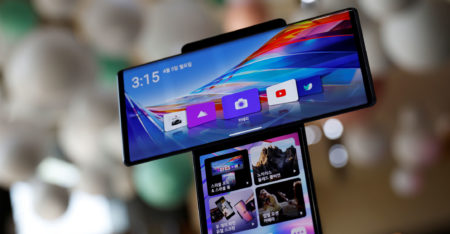
HTC’s One M8, the Taiwanese company’s flagship phone for 2014, was — and still is — is a great smartphone. In fact, TechCentral chose it as the best high-end smartphone of last year, ahead of Apple’s iPhone 6 and LG’s G3. And we weren’t the only ones to do so.
So, it’s probably not surprising that HTC decided not to tinker too much with the M8’s successor, the One M9, which goes on sale in South Africa this month.
Instead of reinvention, the M9 is all about refinement and polish. And in a rapidly maturing cellphone market, where components have become commoditised, that’s no bad thing — for the most part.
Let’s begin with the design, which is arguably the M9’s strongest selling point. It really is gorgeous and, unlike the plasticky exteriors of many Android handsets, looks properly upmarket. For the design conscious, the M9 can be viewed as a real alternative to the iPhone 6, something they would be happy to be seen using in a fancy restaurant.
The “amber gold” one we reviewed certainly turned a few heads, which is an achievement in a world where phones have become homogeneous.
 And the M9 is an excellent phone, from its design, to the updated version of Sense (its skin for Android), to its hardware. But two problems — mediocre battery life compared to some other manufacturers’ flagships and a disappointing camera — let it down.
And the M9 is an excellent phone, from its design, to the updated version of Sense (its skin for Android), to its hardware. But two problems — mediocre battery life compared to some other manufacturers’ flagships and a disappointing camera — let it down.
Let’s start with the design. Not only is the M9 gorgeous, it’s practical, too. Button placement is excellent, with the on/off button an easy thumb-click away for right-handed users and a middle-finger-click away for the left-handed folks. Two separate volume buttons — up and down — are conveniently situated above the power button. The power button has a slightly rougher surface, making it easier to avoid pressing a volume button accidentally, or vice versa for that matter.
The 3,5mm audio jack is tucked away at the bottom of the device, alongside the micro USB charging and data port. Along the top is the infrared blaster for controlling compatible television sets, while the left side houses only the Sim card slot.
The phone’s stereo speakers are on the front of the M9 — a feature we liked in the phone’s predecessor, too — and the audio quality, especially when used in conjunction with HTC’s BoomSound software — is outstanding. In this regard, HTC beats all of its rivals hands down.
Lastly, the screen is the same size as the M8’s. Its 1080p resolution is not the highest available in a smartphone, but it’s more than enough and doesn’t compromise battery life as much as higher-resolution displays.
Let’s be honest about it: you simply don’t need a 2K screen in a smartphone. The HTC’s screen serves up 441ppi of pixel goodness. Our only gripe is that we’d like it to have a slightly larger screen — perhaps 5,2 inches — but that’s a matter of personal preference.
That screen shouldn’t scratch too easily, or break, thanks to tough Corning Gorilla Glass 4.

The One M9 is powered by a Snapdragon 810 chipset with two Cortex quad-core processors (one running at 1,5GHz and the other at 2GHz), which in turn are paired with a decent 3GB of RAM. This is sufficient to deliver a silky-smooth Android Lollipop experience (it’s running 5.0, not 5.1). The phone has 32GB of flash storage, which should be sufficient for most people. But for those who want to carry large multimedia files with them, there’s an SD card slot that accept cards of up to 128GB in size.
The phone has everything you’d expect in the connectivity department, including 802.11ac Wi-Fi and 4G/LTE, along with assisted GPS and Glonass support. (Glonass is the Russian equivalent of GPS.)
Then there’s the camera, which is arguably the most contentious aspect of this phone. Responding to criticism about its previous model, which had two 4-megapixel UltraPixel cameras, HTC has opted for a single, 20-megapixel unit. But it’s failed to include the latest camera technology, specifically optical image stabilisation (OIS).
In our review of the One M8 last year, we wrote that although the phone performed well in most areas, it was the cameras that let it down considerably. “When comparing the image quality to smartphones with double or triple the resolution, it becomes clear that the M8’s cameras are inferior,” we said. “HTC removed OIS — a key feature for creating high-quality, blur-free images — because the dual-camera setup is apparently not compatible with the technology.”
The second camera on the back of the One M8 allowed photographers to change the focus after an image had been taken. While this was useful, it only worked well on subjects that were clearly defined from their backgrounds. For other images, the effect often looked messy.
By ditching the UltraPixel cameras and choosing a single, high-resolution camera for the M9, HTC should have resolved the M8’s biggest weakness.
Unfortunately, it hasn’t. Although the new camera looks great on paper — it can even shoot video in 4K — in practice it doesn’t compare well to the cameras in many other top-end smartphones in 2015.
The camera lacks phase-detect autofocus, meaning it takes longer to focus on a subject. And it lacks OIS, which should be a standard feature on a flagship phone. (Sure, the iPhone 6 doesn’t have OIS — it’s reserved for the 6 Plus — but it should.)

In our testing, we weren’t able to get great pictures, even in good light conditions. This may be the fault of the software, which appears to over-compress images. The camera performs poorly in low-light conditions, too, although the bright, twin-LED flash compensates well for this.
The front-facing camera, a 4-megapixel UltraPixel affair, takes great selfies — no problems there.
The One M9’s other problem area is battery life. Unfortunately, this has long been a problem with HTC phones. But next to other recent flagships, such as the Sony Xperia Z3 and the iPhone 6 Plus, the M9’s battery life is noticeably poorer.
You won’t get through a heavy day’s use without having to reach for the charger before bedtime, which is not the case with the iPhone and the Z3. The poor battery life is odd in light of the generous 2 840mAh battery in the M9. It’s an area HTC needs to pay more attention to ahead of the launch of the M10 (or whatever it’s called) in 2016.
The question now is: has HTC done enough for it to keep its crown as smartphone champion for another year? It certainly will have tough competition this year from the Samsung Galaxy S6 edge, the LG G4 and the Sony Xperia Z4, to name just a few.
It’s likely that its relatively poor camera and weak battery life will knock it down a peg or two. But don’t get us wrong. Despite these two problems, the HTC One M9 is still one of the best smartphones you can buy. — © 2015 NewsCentral Media
- Expect to pay between R10 000 and R12 000 cash for the HTC One M9. Operators will also have it on contract



